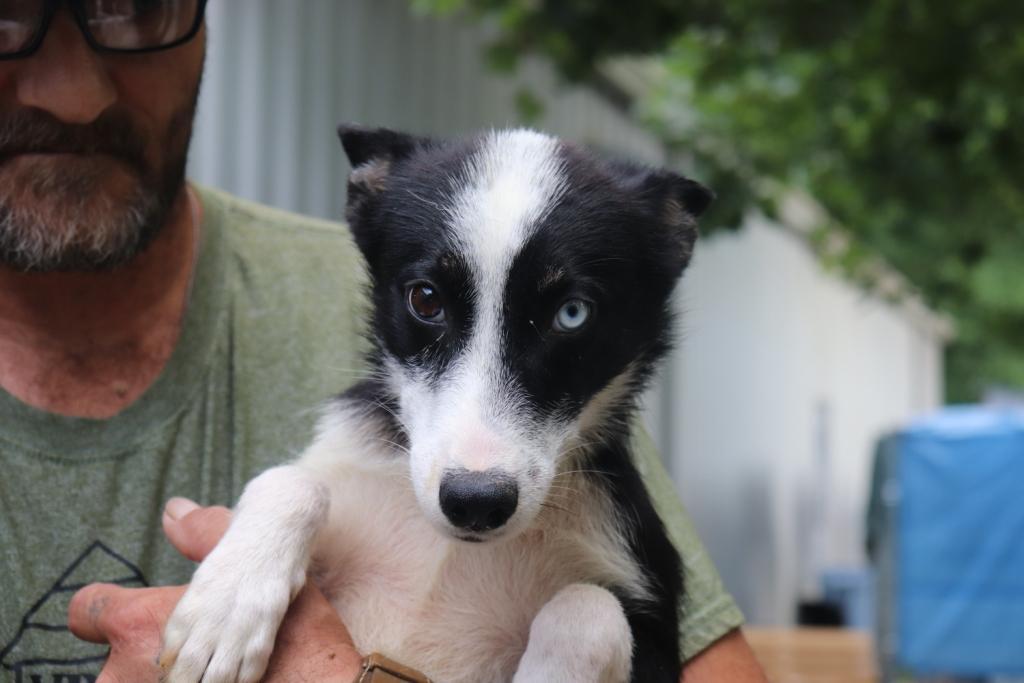Introducing an anxious dog to people and pets
by Ontario SPCA and Humane Society | Dog Care | September 15, 2022

Having a nervous or anxious dog can create some challenges when introducing them to other people or dogs. Being a pet parent of an anxious dog, it is important to educate yourself on the best positive practices for managing their anxious behaviours.
Assessing body language
Learning how dogs communicate and what their body language is saying will be key to knowing how they are feeling so you can avoid a stressful reaction before it happens.
Here is some body language to look for:
- Stiff body
- Tucked tail
- Lip licking or stress yawning
- Avoidance
- Hard stare
- Growling, barking or lunging
- Barring teeth
If you see any of these signs in your dog it means that they are uncomfortable with the situation, and it is best to move them away from the person or other dog. Once the trigger is away, try to redirect their focus with a squeak of their toy or asking them for a “sit,” and reward them with a treat.
Never force them to meet a person or animal they are uncomfortable with. Socializing a dog with anxiety needs to be done gradually and slowly. Going slow and pairing introductions with a positive reinforcer like a high value treat can help to reduce fear and stress.
Meeting someone new
Whenever possible, when your dog is meeting someone new, it is a good idea to have the new person toss your dog’s treats or their favourite toy to them from a distance. If your dog is responding positively then you can have the person slowly come closer, continuing to toss the positive reinforcement item. This can help change your dog’s association towards that person to a positive one, as they are getting something rewarding from them.
When meeting another dog, have that dog walk parallel to you and your dog at a distance. If your dog is not reacting, you can slowly start to decrease the distance between the two dogs, rewarding as the dog comes closer. If both dogs are calm, you can allow for a quick sniff but then continue walking to keep them distracted and focused not just on the other dog, but the walk as well.
For more information about greetings in the home, check out our blog How to prepare your dog for stays with a sitter or learn more about Fear Free® introductions with visitors by Fear Free Happy Homes.
Read more on dog-to-dog introductions, by visiting our blog.
Positive Reinforcement
Repetitive and continual positive training will be key in getting your dog to trust and will help build their confidence. It is always recommended to work with a positive reinforcement-based trainer who is experienced working with anxious or nervous dogs. They can help you understand how your dog is feeling and assist in working through socialization
Remember, anxious behaviour may not be “curable” but being patient, going slow and working on pairing introductions with a positive reinforcer can help to manage the behaviour and help to alleviate high levels of fear, anxiety and stress in your dog.
Facing behavioural challenges
Many dogs face behavioural challenges such as anxiety with meeting new people and animals, which can lead to families requesting to re-home them. The new Ontario SPCA Provincial Dog Rehabilitation Centre will help to alleviate these demands on animal centres by providing a space to help dogs overcome their challenges. The centre is currently under construction and anticipated to open in late 2022. The centre will feature flexible training rooms that can be adapted to help overcome situational problems such as resource guarding or fear of certain noises. There is even a real family living room to help dogs adjust to living in a home environment if they’ve never experienced the comfort of a home before.
Help to support dogs with anxiety and behavioural challenges to receive the care they deserve. Please consider making a donation today to help get the Provincial Dog Rehabilitation Centre to the finish line. Visit ontariospca.ca/dogrehab to learn more.
Categories
Testimonial
Wish to thank everyone involved
I wish to thank everyone involved in the care and rescue of animals, especially volunteers.
